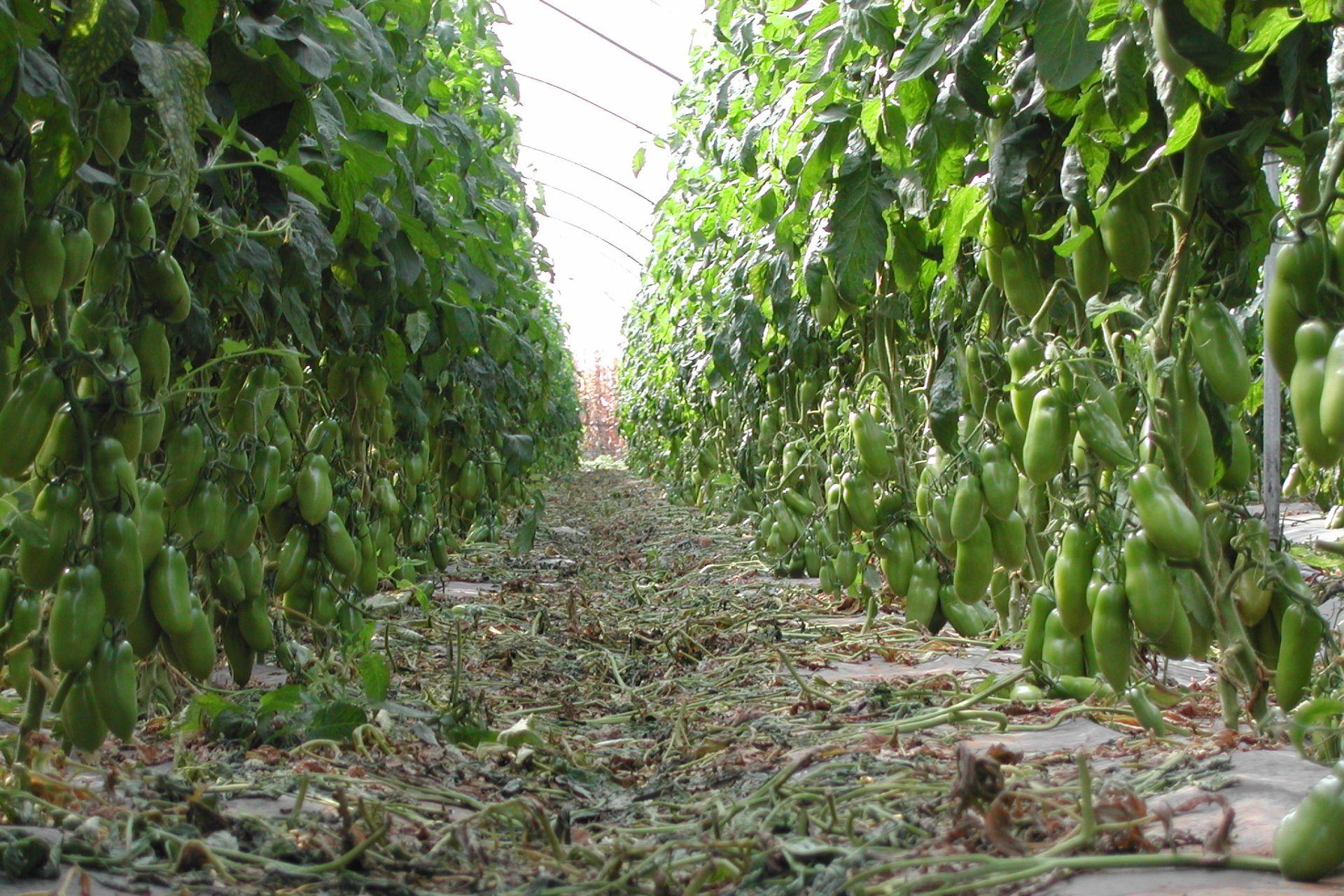
Blossom-end Rot in Tomatoes: causes, prevention and solution
The blossom-end rot represents one of the most important problems in the cultivation of this solanaceous plant (Solanum Lycopersicon). This disease, characterised by the appearance of tissue necrosis at the apical end of the fruit, generates negative impacts on the yield of tomato crops and consequent economic losses.
The importance of understanding this disease well lies not only in its direct effect on productivity, but also in optimising agricultural practices and finding innovative solutions for its management and prevention. Dealing effectively with tomato apex rot requires a multidisciplinary approach that integrates scientific, agronomic and technological knowledge.
What is Apical Tomato Rot and What are the Symptoms
Tomato apex rot is usually defined as a physiological condition that mainly affects the developing fruit by the appearance of the so-called 'black butt'. In fact, the apex of the affected berry presents, at first, a translucent green colour that gradually necrotises to blackness. In the most severe cases, the tissues affected by apical rot may become soft to the touch and deformed, losing their firmness and therefore close to rotting. The compromised integrity of the tomato makes it unsuitable for consumption and marketing. The most affected varieties are the elongated tomato, in particular the San Marzano.
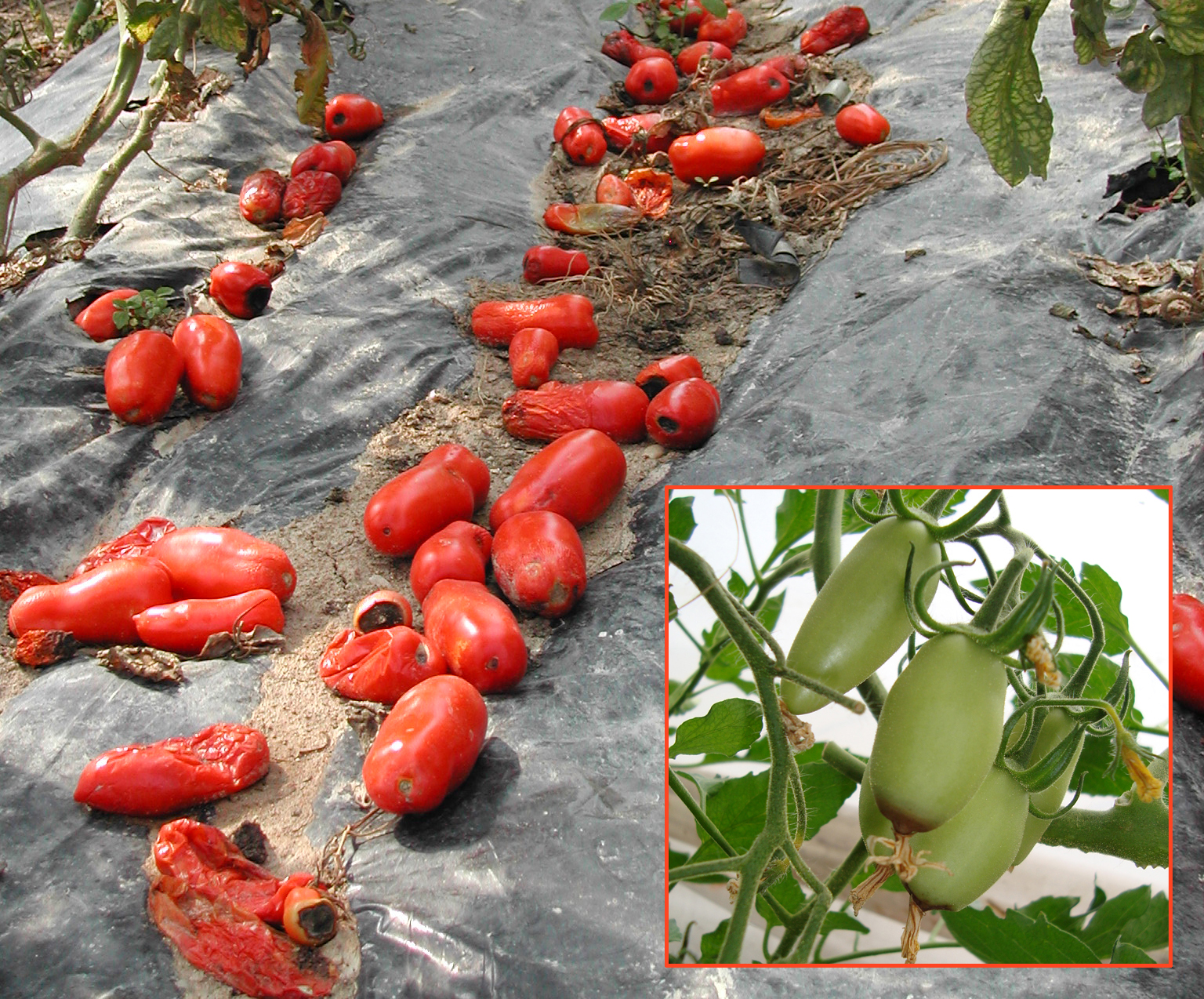
Causes of Blossom-end Rot in Tomatoes: an entomophilous phytopathology
Apical rot is generally attributed to causes of physiological origin, but studies carried out by researcher Alessandro Mendini have revealed that it is an entomophilic phytopathology caused by the ovideposition activity of an apocrytic hymenopteran insect of the Vespidae family.
Usually, the physiological causes of blossom-end rot include calcium deficiency, temperature fluctuations, water shortages, inadequately prepared soils, soil salinity, acidic soils, water stagnation; these factors actually lead to an imbalance in the plant's primary programmatic and a weakening of the plant's physiological state, thus contributing to the manifestation of apical rot in tomatoes.
Returning to the Mendini studies, the insect at the adult stage is about 2-3 mm in size with the body consisting of a distinctly detached head, thorax and abdomen.
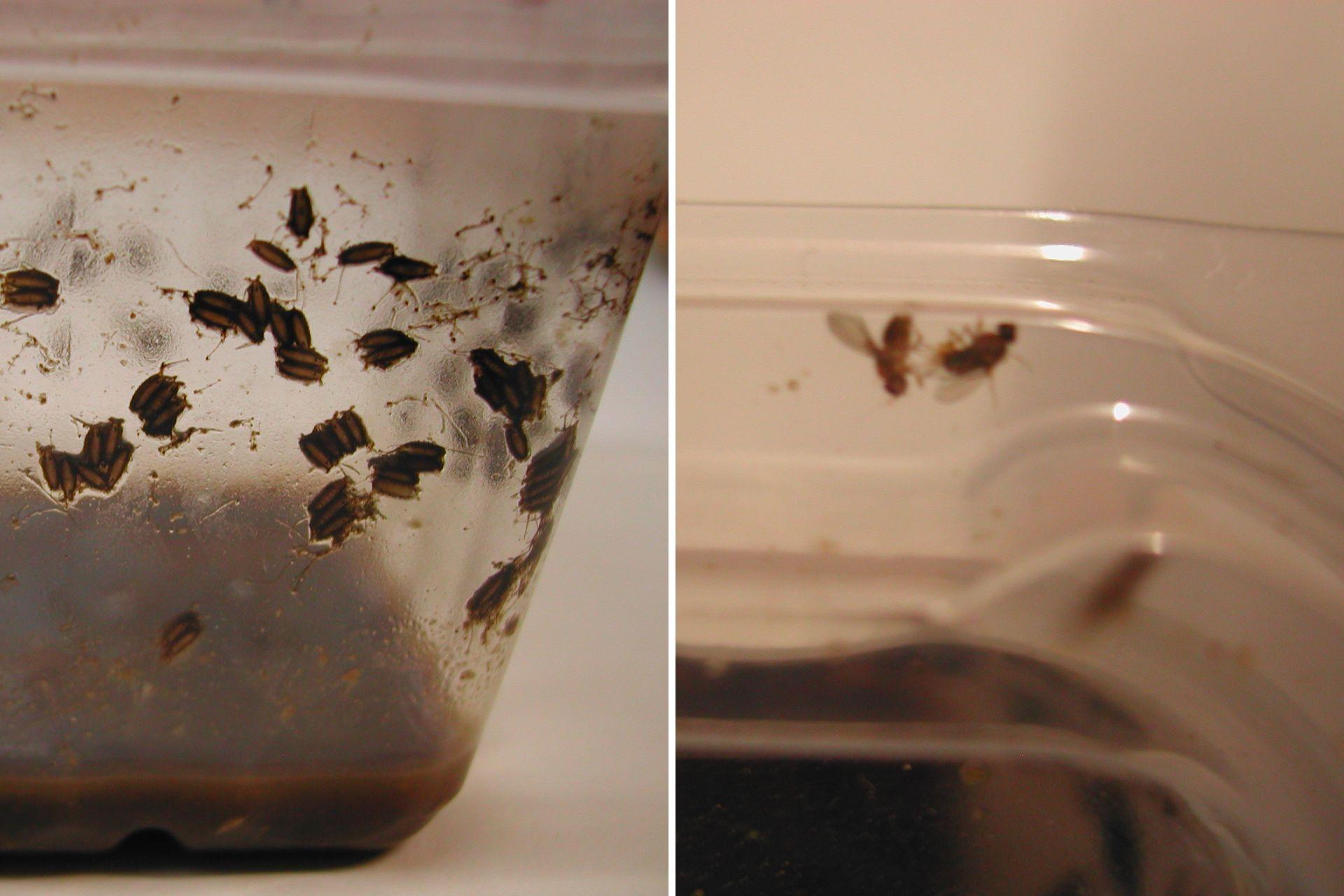
Ovideposition takes place at the apex of the berries, in warm periods at night. It is possible to notice the darkly coloured spots where the introduction of the ovidepositor organ takes place; in a short time, the whole apex becomes translucent, and a necrotic process begins. The high temperatures inside the berry induce the development of the eggs into larvae, which, finding nourishment from the rot that has developed, move on to the pupa-chrysalis stage and into the adult stage.
The entire development process of the insect takes about 4 weeks, also favoured by the fermentation of the spoilt berries left in the field, and is repeated until the temperatures drop, to resume when the remaining eggs find the conditions necessary for their development.
Towards the insect, the plant puts in place a self-defence system by emitting magnetic frequencies that, although imperceptible to man, disturb the ovideposition activity. This ability to defend itself is diminished by water shortages, temperature fluctuations or inadequately prepared soil, abiotic stresses that induce an imbalance in the plant's life programme, favouring aggression by the insect.
The biological cycle and metamorphosis of the insect were reproduced in the laboratory from berry samples showing symptoms of the disease.
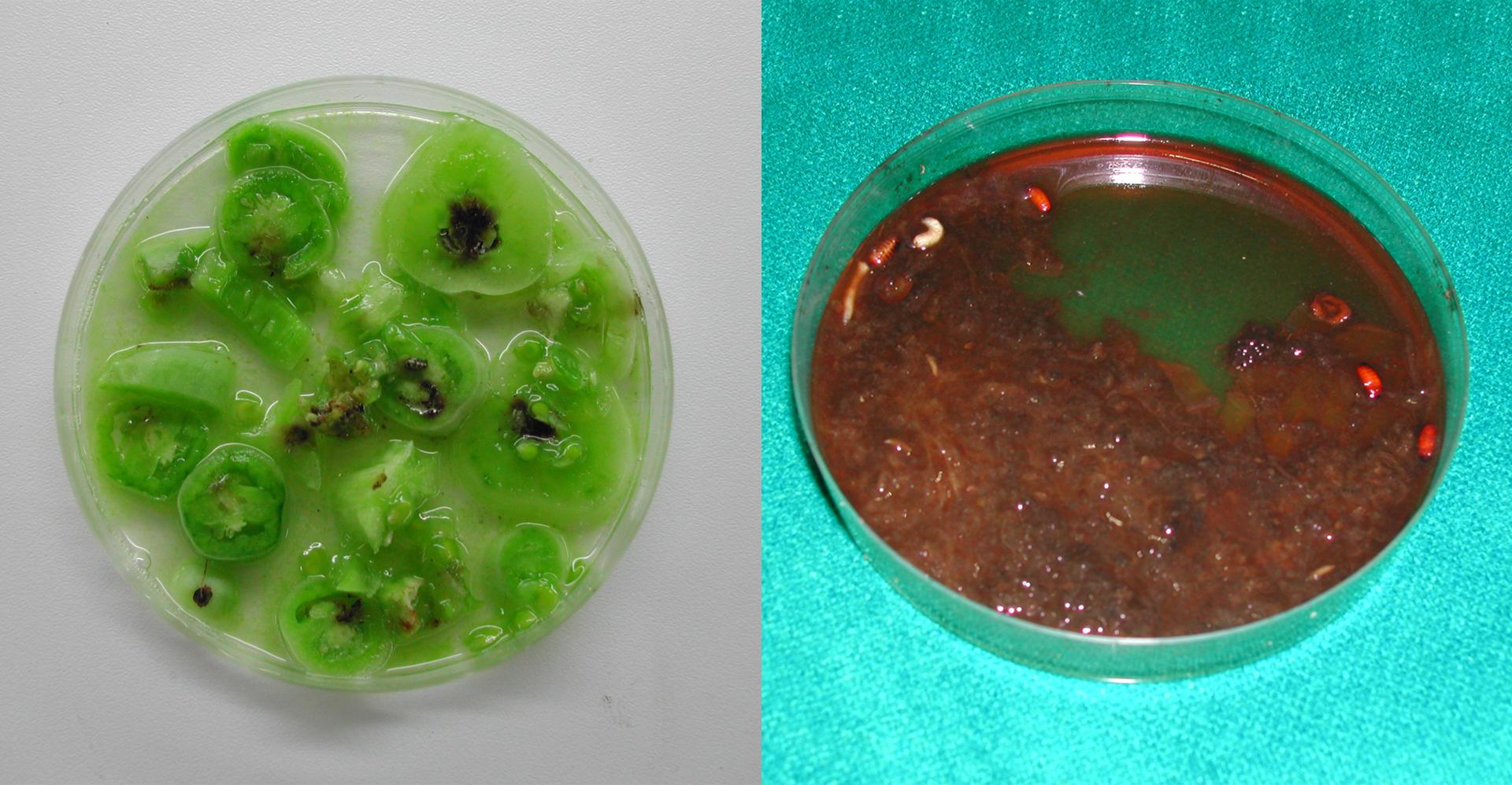
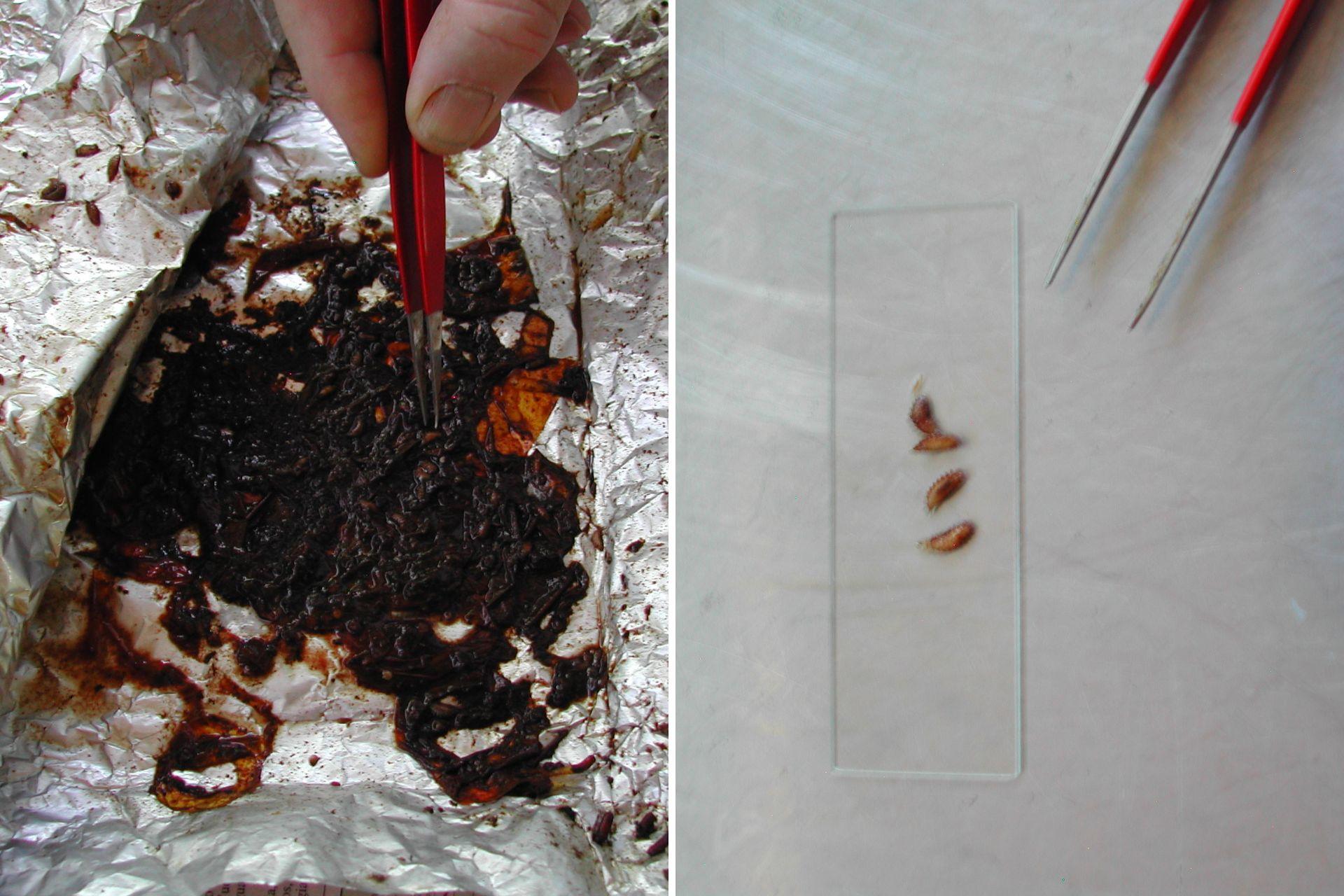
Solutions for Blossom-end Rot in Tomatoes: Results from a Sample Farm
The AXS M31 Research Sector examined the case of a farm that introduced BioAksxter® M31 to reduce large losses in the cultivation of elongated tomatoes (San Marzano variety Oskar) attributed to tomato apical rot.
This disease already appeared on the berry 10-15 days after fruit set, when it was between 2 and 6 cm in size. The apex of the affected berry showed a translucent green colour at first, which became increasingly darker and necrotic until it blackened completely within a week. Growth stopped and the affected berry remained small with a squat shape instead of being elongated and pointed.
On the sample farm, tomato apex rot always occurred, causing an average annual drop in production of 30-40% with peaks of 55-60% in particularly hot years.
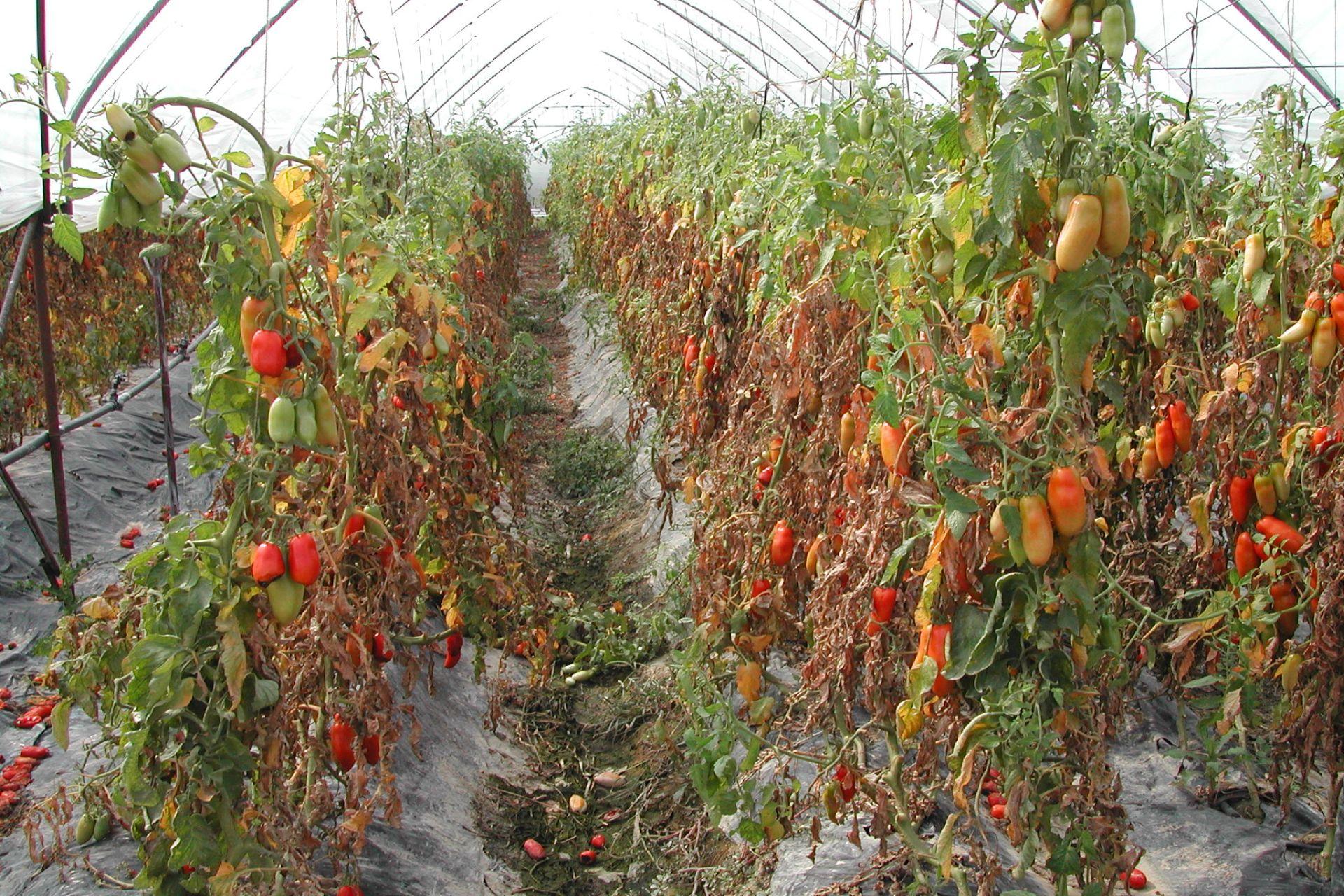
The cultivation of elongated tomatoes involved a total area of 12,100 square metres divided into 4 plots, transplanted at 2 different times.
The first transplanting of 6,800 plants was carried out on 20 April on a plot (A) of 3,100 square metres. The second transplanting of 20,200 plants was carried out on 20 June on three plots (B - C - D) of approximately 3,000 square metres each for a total of 9,750 square metres.
With regard to the development of apex rot in tomatoes, the last growing stages of the year before the product was introduced and all those of the following year were examined.
Crop monitoring was carried out until the end of August. The plants transplanted in April (plot A) and treated with BioAksxter® M31 Agricoltura showed only 34% unmarketable berries. It should be considered that the adverse weather conditions, similar to those of previous summers, and the resulting physiological weakening of the plant should have resulted in a 55-60% development of the disease.
On the plants transplanted in June (plots B - C - D) and treated with BioAksxter®, the number of affected berries dropped to 12%, whereas in previous years it was 30-35%; the production of elongated tomatoes was 3.3 kg per plant, compared to an average of 2.6 kg in the previous three years, an increase in production of 26.9%.
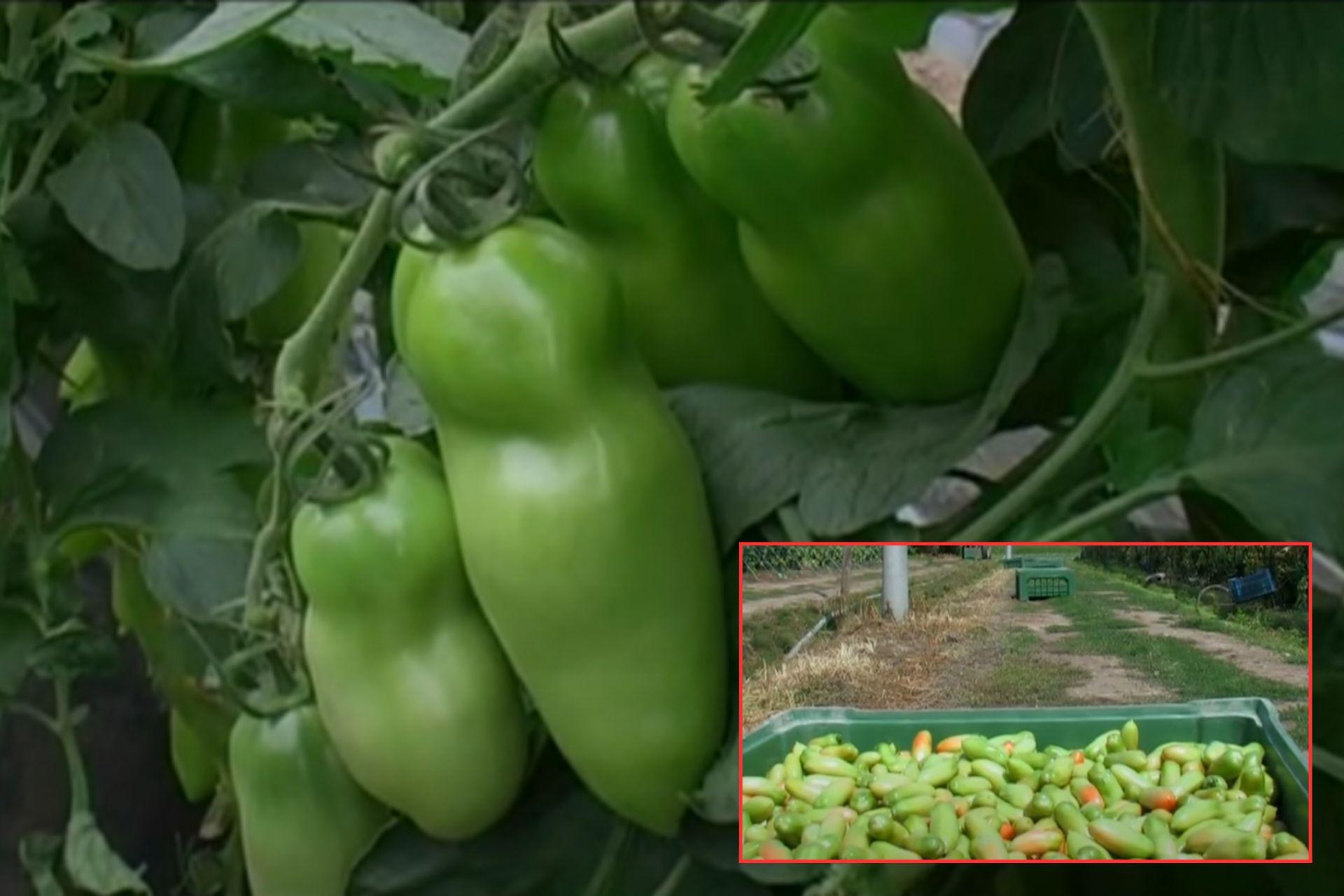
The average annual deviation percentage dropped from 45% to 23%.
Overall, it can be said that the use of BioAksxter® on elongated tomatoes has been highly effective in combating apical rot because, by increasing the plants' natural defences, damage was reduced by 40 to 70%.
Prevention of Blossom-end Rot in Tomatoes
The use of BioAksxter® in the prevention of tomato apex rot enables the plant to implement a defence system by emitting frequencies that ward off the parasitic insect. In addition, the plant becomes more responsive and can cope with environmental conditions favourable to the disease.
The management of apex rot in tomatoes using BioAksxter® M31 Agriculture provides both short-term results by reducing ongoing damage and long-term results by preventing relapse.
